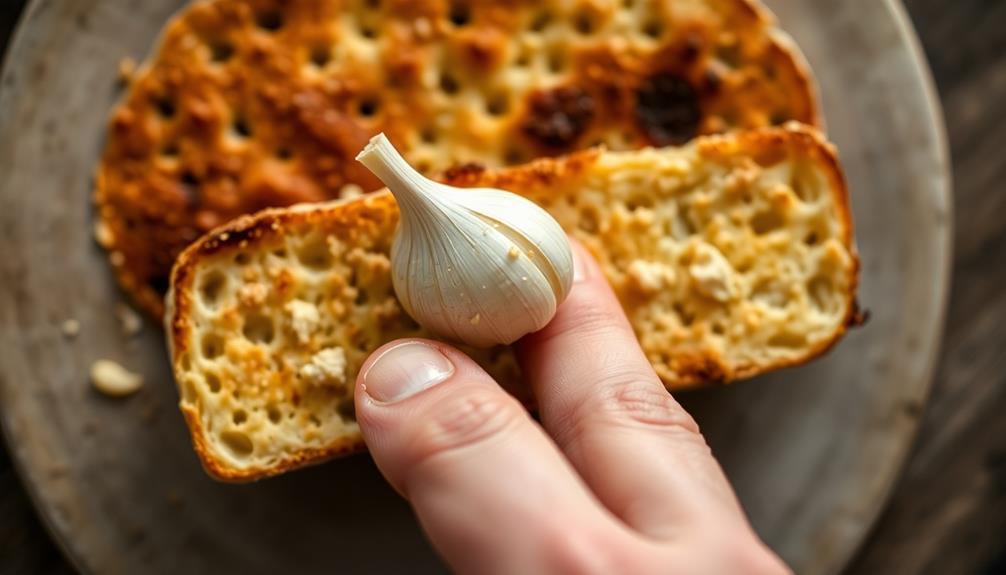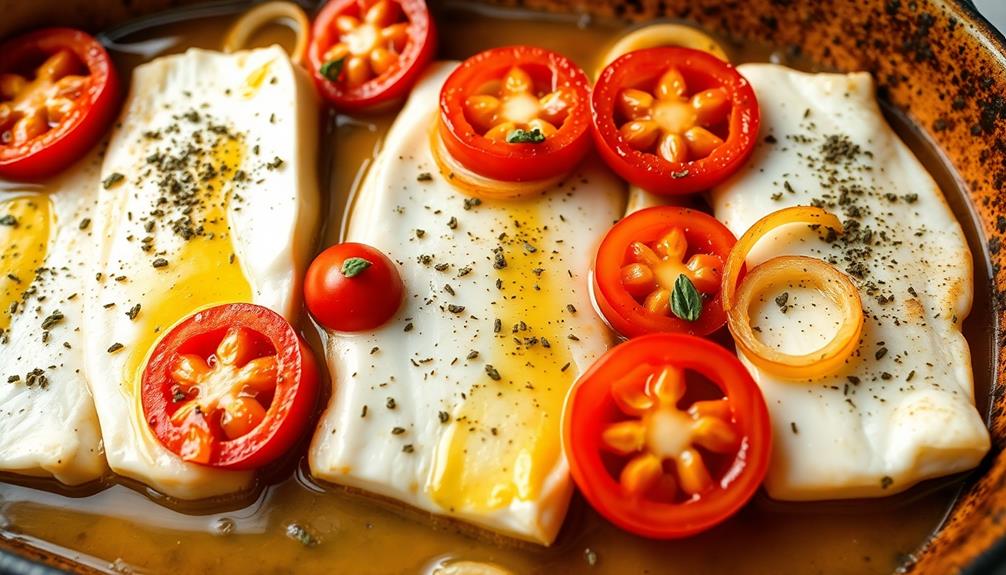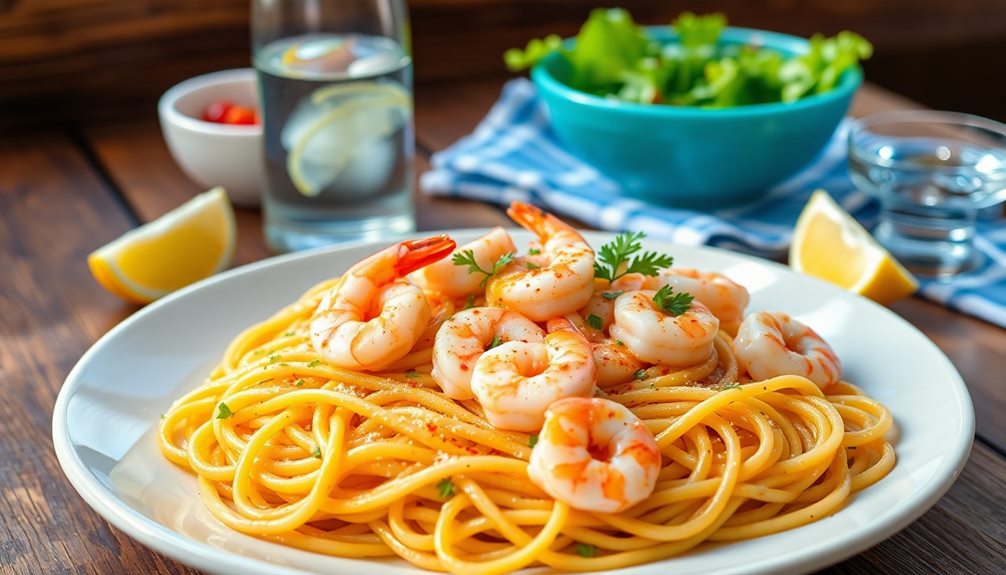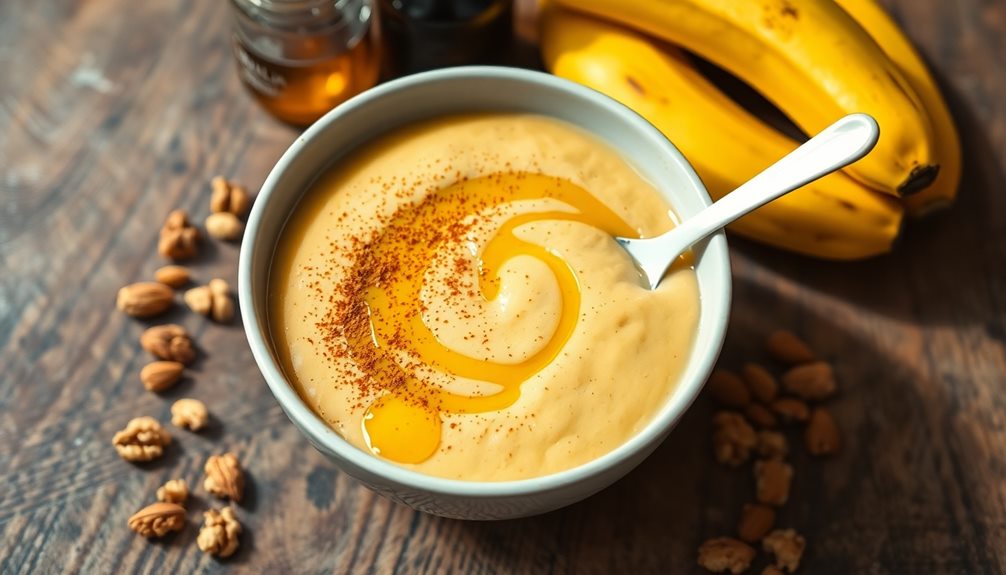Discover the captivating culinary heritage of Crete in a simple yet sophisticated salad known as Dakos. This traditional rusk-based dish celebrates the region's vibrant flavors, featuring crunchy barley rusks soaked in fragrant olive oil, topped with juicy tomatoes and tangy feta cheese. Originating as a nourishing summer staple, Dakos has evolved into a symbol of Cretan identity, showcasing the artistry of local ingredients and time-honored preparation techniques. With its harmonious blend of textures and flavors, this refreshing salad invites you to savor the rich culinary traditions of the Mediterranean. There's more to explore about this delightful Cretan classic. If you’re looking to recreate the authentic taste of Dakos at home, you can easily find the ingredients for this Greek salad recipe at your local market or specialty food store. With just a few simple steps, you can transport your taste buds to the sunny shores of Crete and experience the essence of Mediterranean cuisine. Whether enjoyed as a light lunch or as a side dish to a main course, Dakos is sure to become a cherished addition to your repertoire of beloved recipes.
Key Takeaways
- Dakos is a traditional Cretan rusk salad with deep cultural roots, reflecting the region's cuisine and emphasizing the use of fresh, local ingredients.
- The dish features a base of Cretan barley rusk, topped with fresh tomatoes, crumbled feta cheese, and high-quality extra virgin olive oil.
- Dakos provides a blend of textures and flavors, offering a satisfying and refreshing Mediterranean culinary experience.
- Nutritionally, the dish is rich in fiber, protein, and healthy fats, making it a light and healthful meal option.
- Preparation involves briefly soaking the rusks, drizzling with olive oil, and topping with chopped tomatoes and crumbled feta for a balance of flavors.
History
Dakos, the iconic Cretan rusk salad, has a rich history rooted in the island's culinary traditions. For centuries, Cretans have relied on this simple yet satisfying dish as a staple in their daily lives.
The key ingredient, the dakos rusk, is a twice-baked bread that was originally created as a way to preserve bread during the island's long, hot summers. These durable rusks could be stored for weeks, providing a reliable source of sustenance for farmers, fishermen, and their families.
Over time, the dakos rusk evolved into more than just a practical food item. It became a symbol of Cretan identity and a celebration of the island's abundant local produce.
The traditional topping of fresh tomatoes, creamy feta cheese, and fragrant oregano reflects the bounty of Crete's fertile land and the resourcefulness of its people.
Enjoying a plate of dakos isn't just a meal, but a connection to the rich culinary heritage of this remarkable Mediterranean island.
Recipe
Dakos, a traditional Cretan dish, is a simple yet delightful salad that showcases the flavors of the Mediterranean. This rustic dish is a staple in Crete, where the island's abundant produce and local ingredients come together to create a refreshing and satisfying meal.
At the heart of the dish are the crisp, twice-baked rusks, known as "dakos," which provide a sturdy base for the vibrant toppings. The interplay of the crunchy rusks, juicy tomatoes, tangy feta, and fragrant herbs creates a harmonious blend of textures and flavors that's sure to delight the senses.
Ingredients:
- 4-6 Cretan rusks (or any other similar hard, dry bread)
- 2 large, ripe tomatoes, diced
- 1/2 cup crumbled feta cheese
- 1/4 cup chopped fresh oregano
- 2 tablespoons extra-virgin olive oil
- 1 tablespoon red wine vinegar
- Salt and freshly ground black pepper to taste
Instructions:
Arrange the Cretan rusks on a serving platter. Top each rusk with a generous amount of diced tomatoes, followed by crumbled feta cheese and chopped fresh oregano. Drizzle the salad with extra-virgin olive oil and red wine vinegar, and season with salt and freshly ground black pepper to taste.
Gently toss the ingredients together, ensuring each rusk is evenly coated.
To ensure the best possible experience, it's recommended to use fresh, ripe tomatoes and high-quality feta cheese. Additionally, allowing the rusks to soak up the juices from the tomatoes and dressing for a few minutes before serving will enhance the overall flavor and texture of the dish.
Cooking Steps
First, briefly soak the Dakos in water to soften them.
Then, drizzle the toasted Dakos with your best olive oil.
Next, rub a clove of fresh garlic over the surface of the Dakos to infuse them with its savory aroma.
Top the Dakos with a generous helping of chopped, juicy tomatoes and finish by sprinkling crumbled feta cheese over the entire salad.
Step 1. Soak Dakos in Water Briefly

The initial soaking of the dakos is a critical step in the preparation process, as it helps to soften the rusks and balance their texture.
Begin by gently placing the dry dakos in a shallow dish and pouring in just enough water to cover them completely. Let the rusks soak for a brief 2-3 minutes, keeping a close eye to ensure they don't become overly soggy.
The goal is to achieve a lightly dampened and pliable texture, without the dakos falling apart. You'll know they're ready when you can easily press down on them with your finger, without the rusks crumbling.
Once the soaking is complete, carefully drain the excess water, patting the dakos dry with a clean kitchen towel.
This simple yet essential step sets the stage for the flavorful toppings to come, ensuring a perfectly textured base for your delicious Cretan rusk salad.
Step 2. Drizzle With Olive Oil

Next, drizzle the soaked and dried dakos generously with high-quality extra virgin olive oil.
Let the rusks soak up the rich, golden liquid, which will add a lovely, fruity aroma and flavor. Drizzle in a circular motion, ensuring each piece is evenly coated.
Feel the contrast between the crisp, crunchy dakos and the silky, smooth olive oil as it mingles together. You can almost hear the satisfying sizzle as the oil hits the surface.
Be liberal with the amount, as the dakos will absorb quite a bit. The oil should glisten and pool around the edges, creating a tempting visual.
Take a moment to inhale the enticing scent – the grassy, herbaceous notes of the olive oil will have your mouth watering in anticipation.
Now, let the dakos rest for a minute or two, allowing the flavors to meld before moving on to the next step.
Step 3. Rub Garlic on Toasted Dakos

With the dakos now glistening with the rich olive oil, it's time to add the next layer of flavor.
Grab a fresh garlic clove and give it a good rub all over the surface of the toasted rusk. The pungent aroma of the garlic will immediately waft up, tantalizing your senses and priming your palate for the delicious flavors to come.
Gently pressing the garlic against the dakos allows the juices to seep into the crisp bread, infusing it with that signature Cretan taste. Run the garlic over every nook and cranny, ensuring each bite will be bursting with that distinctive kick.
Once the dakos are thoroughly anointed, you're ready to move on to the next step. The foundation is laid, and the flavors are building – this Cretan rusk salad is shaping up to be a true delight for the senses.
Step 4. Top With Chopped Tomatoes

A generous handful of ripe, juicy tomatoes is the perfect next topping for these garlicky dakos. Chopping the tomatoes into bite-sized pieces will allow their vibrant flavors to mingle with the rusks, garlic, and any other toppings you've chosen.
Slice the tomatoes in half and then chop them crosswise, creating small, colorful cubes that'll sit beautifully atop the dakos. Be sure to use the ripest, most flavorful tomatoes you can find – their sweet juices will soak into the crunchy rusks, creating a delightful contrast of textures and tastes.
As you sprinkle the chopped tomatoes over the top, imagine the burst of summer freshness in every bite. The dakos are now ready to serve, a colorful and mouthwatering Mediterranean salad that's sure to delight your senses.
Enjoy this simple yet flavor-packed topping that celebrates the best of seasonal produce.
Step 5. Sprinkle With Crumbled Feta Cheese

Sprinkle a generous amount of crumbled feta cheese over the chopped tomatoes. The salty, tangy flavor of the feta pairs beautifully with the juicy, sweet tomatoes.
Make sure to crumble the cheese with your fingers, creating a delightful scattered effect across the salad. The contrast of the creamy white cheese against the vibrant red tomatoes is visually stunning, creating an appetizing and inviting presentation.
As you sprinkle, try to distribute the feta evenly, so each bite contains the perfect balance of flavors. The feta's slight crumble adds a lovely texture that complements the soft, juicy tomatoes.
Feel free to be generous with the cheese – a little goes a long way in enhancing the overall taste and experience of this traditional Cretan dish. The feta's saltiness also helps to bring out the natural sweetness of the tomatoes, creating a harmonious flavor profile that will delight your taste buds.
Final Thoughts
Dakos, the iconic Cretan rusk salad, is a delightful blend of flavors that transports you to the sun-drenched Mediterranean. The satisfying crunch of the rusk, the tangy feta, and the juicy tomatoes meld together in perfect harmony.
It's a dish that celebrates the simple, yet sophisticated, pleasures of Mediterranean cuisine. As you take your first bite, you'll be captivated by the bold yet balanced flavors. The saltiness of the feta cheese complements the sweetness of the tomatoes, while the rusk provides a solid foundation to soak up all the delicious juices.
It's a dish that encourages you to slow down, savor each bite, and truly appreciate the artistry of Cretan culinary traditions. Whether you're enjoying it as a light lunch or a flavorful side dish, Dakos is a must-try for anyone who loves the vibrant tastes of the Mediterranean.
Frequently Asked Questions
What Is the Traditional Way to Serve Dakos?
The traditional way to serve this dish is to start by topping a crisp rusk or bread with fresh, juicy tomatoes, then drizzling it with olive oil and sprinkling it with crumbled feta cheese.
Can Dakos Be Made With Other Types of Rusks?
Sure, you can make this dish with other types of rusks besides the traditional Cretan variety. Just choose a sturdy, dried bread that can hold up to the toppings. Get creative and experiment with different flavors.
How Long Do Dakos Typically Last Once Assembled?
Once assembled, your dakos will typically last 2-3 days in the fridge. The crunchy rusk should maintain its texture, and the toppings will stay fresh, allowing you to enjoy your creation for a few days.
Are There Any Variations on the Traditional Dakos Recipe?
You can find plenty of variations on the traditional recipe. Some might add olives, sun-dried tomatoes, or even feta cheese. Get creative and customize it to your taste preferences. The possibilities are endless!
Can Dakos Be Prepared in Advance Before Serving?
You can certainly prepare dakos in advance before serving. Just assemble the ingredients and refrigerate until ready to serve. This makes it a convenient and easy-to-serve dish, perfect for gatherings or meal prep.










